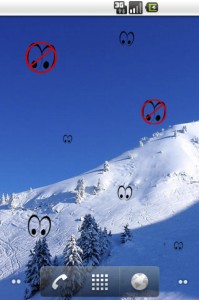Robert Templeman, Roberto Hoyle, Apu Kapadia, and David Crandall,
“Reactive Security: Responding to Visual Stimuli from Wearable Cameras,”
To appear in the Workshop on Usable Privacy & Security for wearable and domestic ubIquitous DEvices (UPSIDE ’14),
Seattle, WA, USA, Sep 14, 2014.
(bibtex)
Roberto Hoyle, Robert Templeman, Steven Armes, Denise Anthony, David Crandall, and Apu Kapadia,
“Privacy Behaviors of Lifeloggers using Wearable Cameras,”
To appear in The ACM International Joint Conference on Pervasive and Ubiquitous Computing (UbiComp ’14),
Seattle, WA, USA, September 13–17, 2014.
(bibtex)
Luke Hutton, Tristan Henderson, and Apu Kapadia,
“Short Paper: “Here I am, now pay me!”: Privacy Concerns in Incentivised Location-Sharing Systems,”
In Proceedings of The 7th ACM Conference on Security and Privacy in Wireless and Mobile Networks (WiSec ’14),
pp. 81–86, Oxford, UK, July 23–25, 2014.
(bibtex)(acm)
Sameer Patil, Roman Schlegel, Apu Kapadia, and Adam J. Lee,
“Reflection or Action?: How Feedback and Control Affect Location Sharing Decisions,”
In Proceedings of The ACM SIGCHI Conference on Human Factors in Computing Systems (CHI ’14),
pp. 101–110, Toronto, Canada, Apr 26–May 1, 2014.
(bibtex)
Robert Templeman, Mohammed Korayem, David Crandall, and Apu Kapadia,
“PlaceAvoider: Steering First-Person Cameras away from Sensitive Spaces,”
In Proceedings of The 21st Annual Network & Distributed System Security Symposium (NDSS ’14),
San Diego, CA, February 23–26, 2014.
(bibtex)
Vaibhav Garg, Sameer Patil, Apu Kapadia, and L. Jean Camp,
“Peer-produced Privacy Protection,”
In Proceedings of the IEEE International Symposium on Technology and Society (ISTAS ’13),
pp. 147–154, Toronto, Canada, June 27–29, 2013.
(bibtex)(ieee)
Roberto Hoyle, Sameer Patil, Dejanae White, Jerald Dawson, Paul Whalen, and Apu Kapadia,
“Attire: Conveying Information Exposure through Avatar Apparel (Demo)” ,
In Proceedings of The 2012 ACM Conference on Computer Supported Cooperative Work Companion (CSCW ’13),
pp. 19–22, San Antonio, Texas, USA, February 23–27, 2013.
(bibtex)(acm)
Sameer Patil, Greg Norcie, Apu Kapadia, and Adam J. Lee,
“Reasons, Rewards, Regrets: Privacy Considerations in Location Sharing as an Interactive Practice,”
In Proceedings of The Eighth Symposium on Usable Privacy and Security (SOUPS ’12),
Article 5, 15 pages, Washington DC, July 11–13, 2012.
(bibtex)(soups)(acm)
Sameer Patil, Yann Le Gall, Adam J. Lee, and Apu Kapadia,
“My Privacy Policy: Exploring End-user Specification of Free-form Location Access Rules,”
In Proceedings of the Workshop on Usable Security (USEC ’12),
pp. 86–97, Bonaire, March 2, 2012. © Springer-Verlag, LNCS 7398.
(bibtex)(usec)(springer)
Yann Le Gall, Adam J. Lee, and Apu Kapadia,
“PlexC: A Policy Language for Exposure Control,”
In Proceedings of The 17th ACM Symposium on Access Control Models and Technologies (SACMAT ’12),
pp. 219–228, Newark, NJ, USA, June 20–22, 2012.
(bibtex)(acm)
Sameer Patil, Greg Norcie, Apu Kapadia, and Adam J. Lee,
“Check out where I am!”: Location Sharing Motivations, Preferences, and Practices,
In Proceedings of theACM SIGCHI Conference on Human Factors in Computing Systems Extended Abstracts (CHI EA ’12),
pp. 1997–2002, Austin, TX, May 5–10, 2012.
(bibtex)(acm)
Sameer Patil and Apu Kapadia,
“Are You Exposed? Conveying Information Exposure (Extended Abstract),”
In Proceedings of The 2012 ACM Conference on Computer Supported Cooperative Work Companion (CSCW ’12),
pp. 191–194, Seattle, WA, February 11–15, 2012.
(bibtex)(acm)
Roman Schlegel, Apu Kapadia, and Adam J. Lee,
“Eyeing your Exposure: Quantifying and Controlling Information Sharing for Improved Privacy,”
In Proceedings of the 2011 Symposium on Usable Privacy and Security (SOUPS ’11),
Article 14, 14 pages, Pittsburgh, Pennsylvania, July 20–22, 2011.
(bibtex)(soups)(acm)


